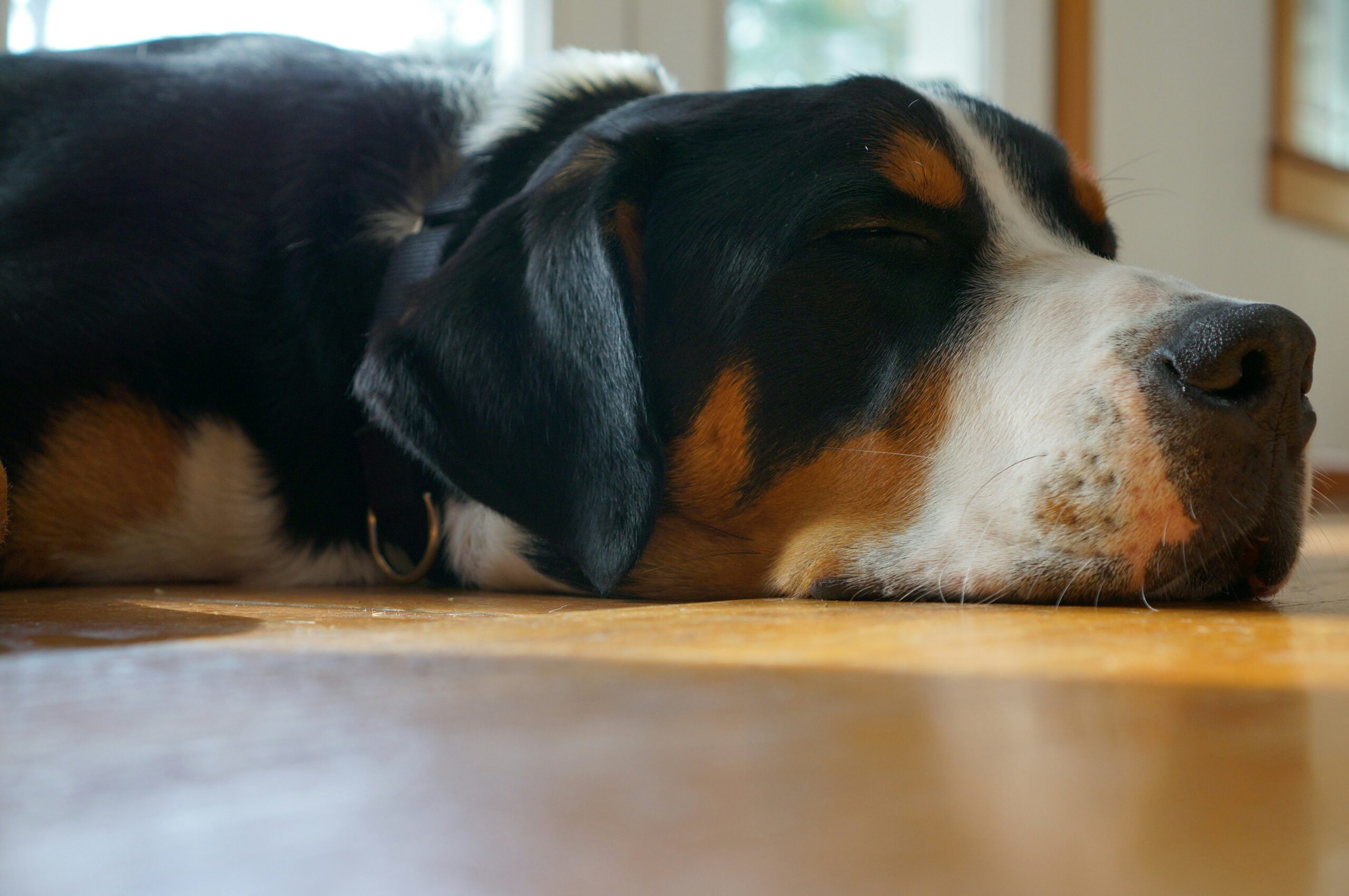Meet the greater swiss mountain dog, a lovable gentle giant that’s as charming as it is formidable. Originating from the majestic Swiss Alps, this breed is not just about good looks; its unique blend of strength, intelligence, and endearing personality makes it a prime choice for family pets. With a history steeped in assisting farmers and herders, these dogs embody both loyalty and a playful spirit. So, whether you’re considering bringing one into your home or just want to revel in their glorious attributes, this comprehensive guide will make you fall head over paws for these magnificent creatures.
Origin and History of the Greater Swiss Mountain Dog
Ah, the greater swiss mountain dog! This big-hearted, fluffy beast has deep roots that trace back to the majestic Swiss Alps. When you think of a greater swiss mountain dog, picture an ancient loyal companion who once helped farmers herd cattle, guard livestock, and navigate the rugged terrain. Here’s a glimpse into its storied past:
- Ancestors: The Molossus, a large breed originating in ancient Greece, is in the family tree. This powerful dog contributed to the breeding of what we now adore as the greater swiss mountain dog.
- Date of Emergence: These noble furballs appeared around the mid-19th century, earning their keep as versatile farm dogs.
- Recognition: In 1908, they proudly earned recognition by the Swiss Kennel Club, solidifying their status as the country’s official national breed.
In summary, with a history etched in loyalty and hard work, the greater swiss mountain dog is not just a pet; it’s a living piece of Swiss folklore, ready to wag its way into your heart!
Characteristics and Appearance
The greater swiss mountain dog is a true marvel of canine beauty! This gentle giant boasts a sturdy build, impressive stature, and striking features. Here’s a snapshot of their notable characteristics:
- Size: Males typically weigh between 110-140 lbs, while females range from 85-110 lbs. Talk about a hefty companion!
- Height: Males stand at about 25-28 inches, and females measure 23-26 inches. Perfect for those who love a big cuddle buddy!
- Coat: Their thick, tri-colored coat – a mix of black, white, and rust – is not only lush but also durable against various weather conditions.
- Face: With expressive, dark eyes and a strong muzzle, the greater swiss mountain dog’s face radiates warmth and loyalty.
| Feature | Male | Female |
|---|---|---|
| Weight | 110-140 lbs | 85-110 lbs |
| Height | 25-28 inches | 23-26 inches |
| Coat Color | Tri-color | Tri-color |
In short, the greater swiss mountain dog combines majestic looks with a heart full of affection, making them a remarkable addition to any family!
Temperament and Behavior
When it comes to the temperament of the greater swiss mountain dog, think of a giant teddy bear with a heart of gold. These gentle giants are known for their friendly and affectionate nature, making them perfect family companions. Here’s a closer look at their behavioral traits:
- Affectionate: They love to cuddle and be around people. This breed thrives on family interaction.
- Devoted: Loyal to their family, greater swiss mountain dogs will guard their loved ones fiercely.
- Alert: These dogs have a natural instinct to look out for their territory, making them great watchdogs without being overly aggressive.
- Intelligent: Quick learners, they respond well to training, but can be a bit stubborn at times.
Quick Comparison with Other Breeds:
| Trait | Greater Swiss Mountain Dog | Labrador Retriever | German Shepherd |
|---|---|---|---|
| Affectionate | ✔️ | ✔️ | ✔️ |
| Protective | ✔️ | ✖️ | ✔️ |
| Stubbornness | ✔️ | ✖️ | ✔️ |
In essence, the greater swiss mountain dog embodies the ideal balance of playfulness and protectiveness, ensuring they’ll not only steal your heart but also keep you safe!
Health Considerations and Lifespan
When it comes to the greater swiss mountain dog, maintaining their health is paramount. These gentle giants aren’t just big-hearted; they tend to have their fair share of health quirks! Let’s chew on some key points to keep your furry friend in tip-top shape:
- Common health issues:
- Hip Dysplasia: More common in larger breeds, keep an eye on their joints.
- Bloat: This intimidating condition occurs when the stomach fills with gas. Watch out for heavy meals right before playtime!
- Elbow Dysplasia: Another joint issue that can be a real pain (literally!).
- Lifespan: The average lifespan of a greater swiss mountain dog is around 8 to 11 years. With proper care, plenty of love, and regular vet check-ups, you can look forward to them being your gentle giant for years to come.
- Preventative care:
- Regular vet visits
- Healthy diet full of nutrients tailored for large breeds
- Consistent exercise routines to keep their weight in check
By staying on top of these considerations, your greater swiss mountain dog will flourish both in health and happiness!
Training and Obedience
Training a greater swiss mountain dog can be as rewarding as it is essential. These gentle giants boast intelligence and a eagerness to please, making them prime candidates for obedience training. However, remember that they can also exhibit a touch of stubbornness. Here’s how to make your training journey smooth sailing:
- Start Early: Introduce basic commands during puppyhood to foster a solid foundation. Early socialization is key!
- Use Positive Reinforcement: Treats, praise, and playtime work wonders. Keep sessions fun and upbeat to maintain their attention.
- Set Clear Boundaries: Consistency is crucial. Establish rules and stick to them so your greater swiss mountain dog knows what’s expected.
- Practice Patience: These dogs can pick up on your emotions, so staying calm and collected encourages a positive atmosphere.
| Training Aspect | Greater Swiss Mountain Dog Characteristics |
|---|---|
| Intelligence | High – learns commands quickly |
| Social Nature | Friendly with people and other pets |
| Stubbornness | Occasional – requires persistent guidance |
In no time, you’ll have a well-mannered companion who’s not just brawn but brains too! 🐾
Exercise Needs and Activity Level
The greater swiss mountain dog isn’t just a handsome face; it’s a sturdy powerhouse that thrives on activity. If you think this gentle giant will lounge around all day, you’re in for a surprise! This breed requires regular exercise to keep them happy and healthy.
Here’s the lowdown on their activity needs:
- Daily Walks: Aim for at least 30 to 60 minutes a day. These guys love to explore, sniff around, and maybe even stop for the occasional squirrel.
- Playtime: Engage them in games like fetch or tug-of-war. Trust us, they have a competitive spirit!
- Hiking Buddy: As a breed created for hard work in the Alps, they excel at hiking. Take them along on your next adventure and enjoy each other’s company.
Comparison of Activity Needs:
| Activity Type | Greater Swiss Mountain Dog | Other Breeds |
|---|---|---|
| Walks | 30-60 minutes | 20-40 minutes |
| Playtime | Daily required | Occasional fine |
| Hiking | Loves it! | Varies by breed |
With just a bit of dedication, your greater swiss mountain dog will turn into a well-exercised, joyful companion—perfect for cuddles after a long day of adventures!
Grooming and Maintenance
Ah, the grooming of the greater swiss mountain dog—a task that’s as gentle as this giant is! With their sleek tri-color coats, these dogs make a stunning impression. But don’t be fooled; keeping them looking fabulous requires a bit of effort. Here’s how you can ensure your furry friend stays dapper:
- Brushing: Give their coat a once-over with a brush once a week to keep shedding at bay and to maintain a shiny appearance. During shedding seasons, brush them daily.
- Bathing: Bathe your greater swiss mountain dog every few months, or whenever they roll in something questionable! Use a gentle dog shampoo to avoid skin irritations.
- Nail Trimming: Keep those mighty paws in check by trimming nails every few weeks. If you hear clicking on the floor, it’s time for a trim!
- Ear Cleaning: Regularly check and clean their ears. A cotton ball dampened with an ear cleaner will do the trick.
- Dental Care: Don’t forget their pearly whites! Brush their teeth a few times a week to prevent dental issues.
With a little love and attention, grooming your greater swiss mountain dog can become a delightful bonding experience!
Diet and Nutrition
Feeding your greater swiss mountain dog is both an art and a science – you want to nourish this gentle giant without contributing to any extra baggage! Here’s how to keep your pup’s belly happy and healthy:
- High-Quality Dog Food: Look for brands that list meat as the first ingredient. This is crucial because your greater swiss mountain dog is a large breed that needs protein to maintain muscle mass.
- Balanced Diet: Incorporate vegetables and grains to ensure your dog receives essential vitamins and minerals. However, keep the portions in check!
- Portion Control: Large dogs like the greater swiss mountain dog can be prone to obesity, so measure their food according to guidelines. Typically, aim for 3-5 cups a day, split into two meals.
- Hydration: Always provide fresh, clean water. This big guy needs to stay hydrated, especially after a play session!
- Treats: Use treats wisely, preferably on training days or special occasions. Just remember, less is more—don’t let yummy snacks outweigh their meals!
With the right diet, your greater swiss mountain dog will live a healthy and happy life!
Choosing a Breeder or Adoption
When it comes to welcoming a greater swiss mountain dog into your home, finding the right source is crucial. Whether you want to adopt or buy, a responsible choice can pave the way for a wonderful companionship. Here’s how to choose wisely:
Adoption
- Check Local Shelters: Many greater swiss mountain dogs need a loving home. Start your search at a local animal shelter or rescue.
- Meet and Greet: Spend time with your potential furry friend. Make sure their personality matches your lifestyle.
- Ask Questions: Inquire about their background, any medical issues, and behavior history.
Breeder
- Reputable Breeders: Look for breeders who prioritize health and temperament. They should provide health clearances for both parents.
- Visiting the Kennel: Don’t be shy! Check the conditions of the kennel and interact with the puppies.
- Understand the Commitment: A responsible breeder will ensure you’re prepared for the joy (and challenges) of a greater swiss mountain dog.
In short, whether adopting or purchasing, be sure you’re making a choice that harmonizes with your newly found gentle giant! 🐾
Living with a Greater Swiss Mountain Dog
Ah, the joy of sharing your life with a greater swiss mountain dog! Picture this: a gentle giant resting at your feet, but like any canine companion, they come with their quirks. Here’s what to expect when you welcome one of these delightful dogs into your home:
- Space Needs: These big guys need room to stretch! Ideally, they thrive in homes with a yard, but a daily walk will keep them happy too.
- Family-Friendly: Greater Swiss mountain dogs are known for their affectionate nature. They typically get along well with kids, making them fun family pets.
- Social Butterflies: Fostering good social skills is vital. Introduce your greater swiss mountain dog to different people and environments right from puppyhood!
- Routine Lovers: These pups thrive on a schedule. Regular feeding, exercise, and training sessions help keep them mentally and physically engaged.
- Shedding Alert!: Be prepared for shedding seasons. Regular brushing helps manage their fur…and keeps your floors fur-free!
In short, living with a greater swiss mountain dog can be an enriching experience filled with love and laughter. Just be ready for some cuddles!
Frequently Asked Questions
What makes the Greater Swiss Mountain Dog a gentle giant?
The Greater Swiss Mountain Dog, fondly known as the ‘Gentle Giant’, is like the teddy bear of the canine world! Weighing in at around 100 pounds or more, these dogs are known for their calm disposition and friendly nature. Despite their large size, they possess a gentle temperament, making them excellent companions for families and children. Their love for cuddles is only rivaled by their love for food, so prepare for plenty of both!
How much exercise does a Greater Swiss Mountain Dog need?
These majestic dogs are not just couch potatoes! The Greater Swiss Mountain Dog requires regular exercise to keep their hefty bodies healthy and their spirits high. A daily walk combined with playtime in a secure yard is ideal. Aim for at least an hour of exercise each day to prevent them from becoming bored and developing destructive habits. Remember, a tired Greater Swiss is a happy Greater Swiss!
Are Greater Swiss Mountain Dogs good with kids and other pets?
Absolutely! Greater Swiss Mountain Dogs are famously gentle with children, often forming strong bonds with their little human counterparts. Their nurturing instincts make them excellent playmates. When it comes to other pets, they’re generally sociable and can coexist peacefully with them, especially if introduced to them at a young age. Just be sure to supervise interactions, as no one wants an overenthusiastic giant inadvertently knocking over a toddler!
What kind of grooming do they require?
Grooming a Greater Swiss Mountain Dog is like maintaining a sheer coat of majesty! Their short, dense, weather-resistant coat needs a good brushing once a week to keep it looking its best and to minimize shedding. Surprisingly, they are not heavy shedders, but during shedding season (usually spring and fall), a little more brushing might be in order. A bath every few months and routine nail clipping will keep this gentle giant in tip-top shape!



